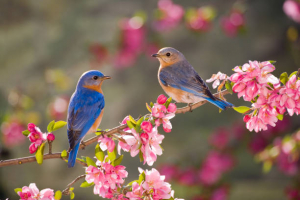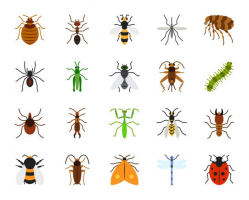Top 11 Questions About Useful Plants Answered
Plants are mostly photosynthetic eukaryotes in the Plantae kingdom. Historically, the plant kingdom comprised all non-animal living creatures, including algae ... read more...and fungi; however, all contemporary definitions of Plantae exclude fungi and certain algae, as well as prokaryotes (the archaea and bacteria). According to one definition, plants belong to the group Viridiplantae (Latin for "green plants"), which is sister to the Glaucophyta and includes green algae and Embryophyta (land plants). Flowering plants, conifers and other gymnosperms, ferns and their associates, hornworts, liverworts, and mosses are examples of the latter. There are still many questions about helpful plants today, and we will look at these questions and their answers.
-
NASA conducted a research in the 1980s and discovered that numerous houseplants may enhance the air quality in a small room in a residence. It seems to reason that having a lot of plants in your home will improve the quality of the air you breathe while inside. If you are willing to care for a large number of houseplants and want to decorate your home in a natural fashion, this might make a significant impact in your mental and general health. Of course, it is not as simple as simply placing some potted plants about and reaping the advantages.
You must select the plants with care. In this post, we will discuss if there are any genuine benefits to having indoor houseplants in terms of good air, as well as which plants you should consider. NASA discovered that certain plants had a significant enough influence to warrant further investigation. In other words, not every plant will purify the air. Of course, any plant is preferable to none at all, but some will have a greater influence than others. For example, NASA identified ficus and snake plants as having qualities that sucked in polluted air and released clean oxygen in its place, improving the air quality in the room significantly.

istockphoto https://www.youtube.com/watch?v=AmeiXikh0v8 -
In addition to the vivid beauty that comes with such diversity in flora and animals, rainforests serve an important role in keeping our planet healthy. By collecting carbon dioxide and releasing the oxygen we need to survive. The absorption of this CO2 also contributes to the stabilization of the Earth's climate. Rainforests also contribute to the global water cycle by adding water to the atmosphere via transpiration, which results in clouds. Water emitted by rainforests travels across the planet; experts believe that moisture emitted by African rainforests ends up raining as rain in the Americas!
Rainforests act like a giant sponge, storing water. Indeed, it is estimated that the Amazonian trees alone store more than half of the world's precipitation! Rainforest trees absorb water from the forest floor and expel it into the atmosphere as whirling mists and clouds. Droughts would become more prevalent if rainforests did not recycle vast amounts of water, feeding rivers, lakes, and irrigation systems, potentially leading to widespread starvation and disease. It may surprise you to know that more than 25% of our modern medicines originate from tropical forest plants. Even so, we have only learned how to use 1% of these amazing plants, so imagine the possibilities if we could experiment with the other 99%!
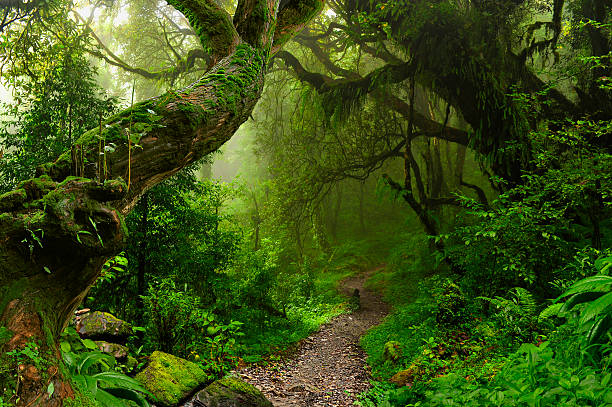
istockphoto https://www.youtube.com/watch?v=zV2druTpnaA -
Ammophila is a flowering plant genus that includes two or three grass species that are remarkably similar. These grasses are also known as marram grass, bent grass, and beachgrass. These grasses are nearly entirely found on the first line of coastal sand dunes. Their large subterranean stems or rhizomes allow them to survive amid shifting sands and severe winds, as well as to assist stabilize and prevent coastal erosion.
Marram grass is a hardy perennial grass that is frequently planted to assist maintain shifting sand dunes. Dry sand is continually moving and drifting between the water's edge and the beginning of the dunes. Marram grass, commonly known as beach grass, is one of the few plants that can grow in this windy climate. It spreads its tuberous roots just beneath the sand's surface, forming a subterranean web that helps keep the sand in place. This permits the dirt to settle and the dune to rise.
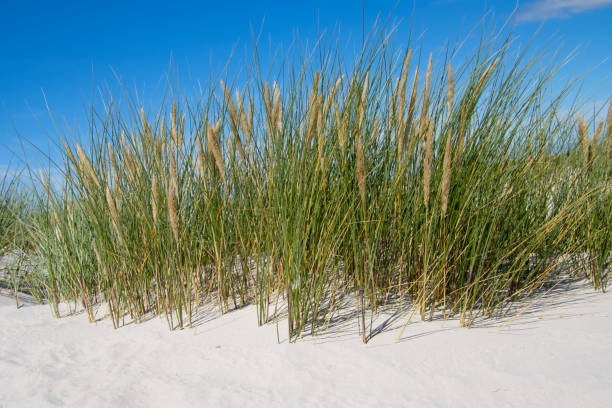
istockphoto https://www.youtube.com/watch?v=H3nQ9_sQruA -
The ship oak was a kind of oak tree that was employed in shipbuilding. The ship oak was a big tree that could reach heights of more than 100 feet. The ship oak was a robust tree with a large trunk and broad branches. Because it was sturdy and resilient, the ship oak was a favourite tree among shipbuilders.
On average, oak trees may live for up to 1000 years. Many civilizations see them as symbols of power and intellect, and they are venerated as such. A diverse assortment of living organisms find food and refuge in the Oaks. You will obtain a better grasp of the life cycle of oak trees if you follow this wiki. Oak wood's longevity and strength are two of its most distinctive characteristics. It has been used to create homes, furniture, ships, and barrels for thousands of years. The principal material utilized by Vikings to construct their longships was oak wood.
The oak tree's bark was traditionally used to tan leather. When wheat was lacking, acorns from oak trees were utilized to produce bread flour. The leaves and bark have been used to cure a variety of medical issues all throughout the world. They have been related to wisdom in the cultures where they have been discovered, such as Celtic mythology. It was a Celtic sign linked with Dagda, the Celtic god.
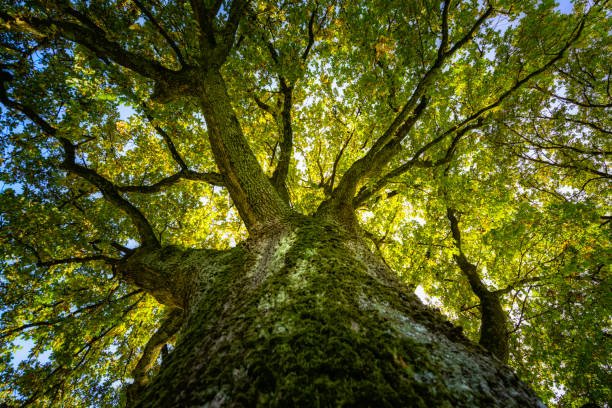
istockphoto 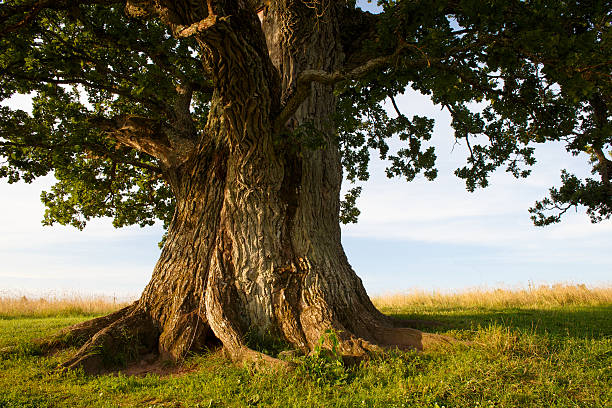
istockphoto -
Linen is a textile manufactured from flax plant fibers. Linen is more durable and absorbent than cotton, and it dries faster. Because of these qualities, linen is popular for use in clothing and is comfortable to wear in hot weather. Other distinguishing features include its proclivity to wrinkle. Linen textiles appear to be among the oldest in the world, with a history dating back thousands of years. Dyed flax fibers discovered in a cave in Southeastern Europe (present-day Georgia) indicate that woven linen garments made from wild flax may have been used for over 30,000 years.
Linen was employed in ancient civilizations such as Mesopotamia and Egypt, and the Bible mentions linen. The linen industry was vital in the economics of various European countries as well as the American colonies in the 18th century and beyond. Textiles with a linen weave texture are also referred to as "linen", even if they are composed of cotton, hemp, or other non-flax fibers.
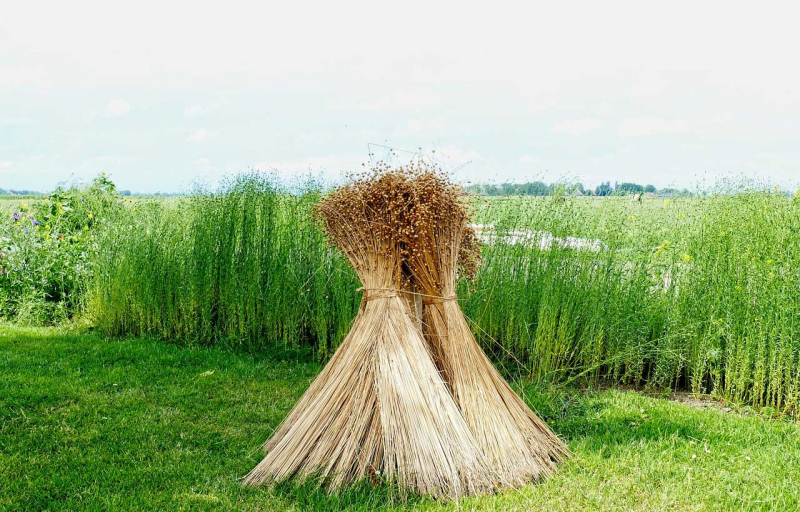
istockphoto https://www.youtube.com/watch?v=7Eec859dAhg -
Cotton, derived from blooming Gossypium plants, is a major vegetable fiber used in clothing, and the oil extracted from its seeds may be used in cooking or to make soap. Cotton is cultivated all over the world, including in the following states: California, Arizona, New Mexico, Texas, Oklahoma, Arkansas, Missouri, Mississippi, Alabama, Louisiana, Florida, Tennessee, North Carolina, South Carolina, Virginia, Georgia, and Kansas.
Cotton is harvested by machines called pickers or strippers in regions where it is not picked by hand. Cotton-picking machines use spindles to select (twist) seed cotton from burrs attached to plant stems. The seed cotton is subsequently removed from the spindles by doffers, a series of circular rubber pads, and knocked into a conveyance system. Traditional cotton stripping machines employ rollers with alternating bats and brushes to knock the fluffy white bolls off the plants into a conveyor. Following harvest, the majority of the cotton is pressed into huge blocks for storage. These cotton bundles are then transferred to a cotton gin, which is a machine that extracts the seeds from cotton bolls.
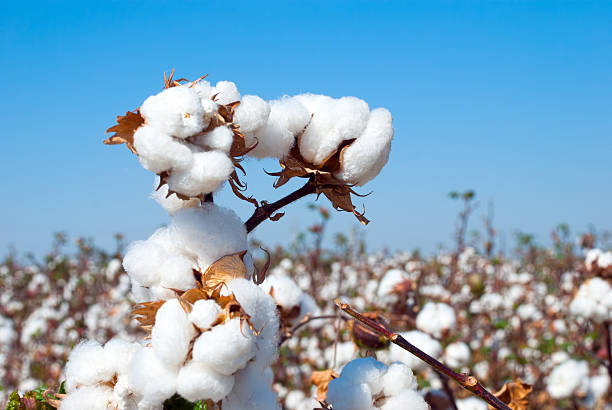
istockphoto https://www.youtube.com/watch?v=BofeiKsE5pU -
Paper has been created from a variety of resources over the ages, including cotton, wheat straw, sugar cane waste, flax, bamboo, wood, linen rags, and hemp. Fiber is required for the production of paper, regardless of the source. Today, fiber is mostly derived from two sources: wood and recycled paper products. To create paper from trees, raw wood must be converted into pulp. This pulp is manufactured from a combination of wood fibers and chemicals. Large mesh screens are sprayed with pulp. This results in a pulp mat, which is subsequently dried and goes through numerous procedures to remove the water.
Paper is manufactured by combining wood and fibres. It all begins with the removal of trees. The logs are subsequently sent to a paper mill. Initially, the bark is stripped from the trunk at the manufacturing. The wood is then cut into extremely little pieces. The wood is then cooked with water and a few chemicals until it becomes a slushy, mushy pulp. To produce an aged effect, ink your paper with a blender and a mix of distress inks such as wallnut and antique picture. Another method is to spray the paper with ink. To produce an aged look using paint, use several tones of brown and work in phases.
https://www.youtube.com/watch?v=OXQDsSctP1M https://www.youtube.com/watch?v=DjfCpBKZCd4 -
Aloe vera is a succulent plant that has long been used medicinally. Aloe vera is well recognized as a sunburn cure, but it may also be used to treat rashes, burns, wounds, and other skin diseases. It also aids in the improvement of digestive health and may aid in the regulation of blood sugar in diabetics. The aloe vera plant is easy to cultivate at home and has long, thick triangular leaves. The rind is on the outside, the middle layer is a bitter yellow sap, and the core is a gel (which can be applied directly to the skin). The plant may also be peeled and juiced, and there are oral supplements available.
Aloe vera has been used to cure a variety of ailments. Please keep in mind that supplement usage should be tailored and evaluated by a healthcare expert, such as a qualified dietitian, pharmacist, or healthcare practitioner, while you research the science behind aloe vera. No dietary supplement is meant to diagnose, treat, cure, or prevent illness. Before using a supplement, always consult with your healthcare professional to confirm that the supplement and dose are appropriate for your specific requirements. In any form, there are no recommended dosages of aloe vera. The effects and danger of adverse effects vary depending on the type of aloe vera supplement used, as well as your age, weight, and health state.
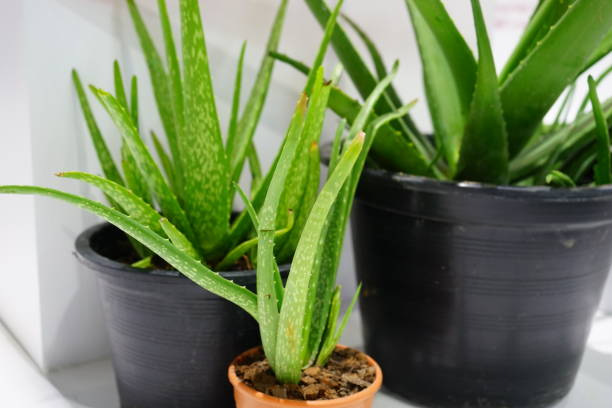
istockphoto https://www.youtube.com/watch?v=WbiNr_b7oZk -
Yes, as well as a variety of other items. Many household items, including ice cream, toothpaste, fertilizers, fuel, and cosmetics, include substances derived from sea plants and animals. You may come across the terms carrageenan and alginate on the labels of several of these items. Carrageenans are red algae-derived chemicals that are used to stabilize and jell foods. Brown algae include alginates, which thicken and creamify meals and extend their shelf life. They are used to prevent the formation of ice crystals in ice cream, for example.
Puddings, milkshakes, and ice cream frequently include alginates and carrageenans. Diatom remnants (hard-shelled algae) are used to produce pet litter, cosmetics, and pool filters. The kelp plant is often used in lipstick, toothpaste, and clothing dye. Toothpaste was invented because ancient Egyptians had a lot of tooth problems. The major explanation was that the bread they ate had sand and grit, which wears down the enamel. When found, the Egyptian toothpaste formula from the 4 th century AD made a stir among dentists who regarded it as an innovative recipe "ahead of its time". Fluoride-free toothpaste has grown in popularity among consumers who prefer "natural" goods or would want to avoid fluoride for any reason.
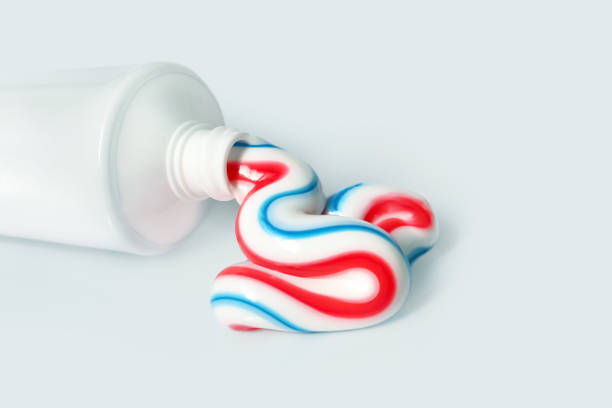
istockphoto https://www.youtube.com/watch?v=orsphyYK-KI -
Spices are ground-up dried plant seeds, fruits, roots, or bark. Spices have been grown for ages in the Middle East and East Asia for their antimicrobial effects, flavoring dishes, and aiding digestion. Spices were employed in ancient times to hide undesirable tastes and aromas in food, and subsequently to keep food fresh. They were extremely valuable commodities. A handful of cardamom was worth as much as a poor man's yearly earnings as early as 1000 BCE, and many enslaved individuals were bought and sold for a few cups of peppercorns. The spice trade flourished between the Mediterranean region and East Asia during the period of the ancient Greeks.
By caravan, Arab traders introduced spices such as cinnamon, cassia, black pepper, and ginger to Europe. Spices were utilized in cooking, medicine, and luxury products like as perfumes, bath oils, and lotions throughout this time period. European explorers brought spices to the New World in the 15th and 16th centuries. Pepper, cinnamon, vanilla, nutmeg, ginger, cloves, and allspice were the most popular cooking spices throughout the days of American colonization. Colonial households experimented with unusual spices like as chili peppers, cardamom, cumin, saffron, and turmeric to flavor foods (which was also used as a food preservative). Most spices are now cultivated in big farms in China, India, the Middle East, South America, and North Africa, where they are typically handpicked.

istockphoto https://www.youtube.com/watch?v=E1mMgwp7iaE -
Flowers that can be eaten are known as edible flowers. Flowers can be eaten as vegetables as a main course or utilized as herbs. Flowers may be found in a variety of regional cuisines, including Asian, European, and Middle Eastern dishes. Edible flowers have acquired appeal as a creative and novel component for the culinary world due to their powerful and distinctive flavors, textures, and colors; they are used to recipes to offer flavor, scent, and adornment. They can be eaten as part of a main course or mixed into salads. Flowers can be used to flavor beverages or to manufacture beverages such as tisanes and wines.
They are used in spreads like butter and fruit preserves, as well as vinegar, marinades, and sauces. Flowers are also consumed for food. Many flowers that are theoretically edible can be bitter. The dandelion is an example of a plant with high nutritional value blossoms. Its flowers have been demonstrated to have significant quantities of polyphenols and antioxidants, as well as anti-inflammatory and anti-angiogenic capabilities. Flowers should be picked fresh and early in the day for the finest flavor. Most species' wilted and fading blooms, as well as unopened buds, can be unpleasant and even bitter. The flavor and color of nectar vary greatly between flower species; as a result, honey may vary in color and taste depending on the flower type. Many flowers may be eaten whole, although some sections, such as the stamens and stalks, are bitter.
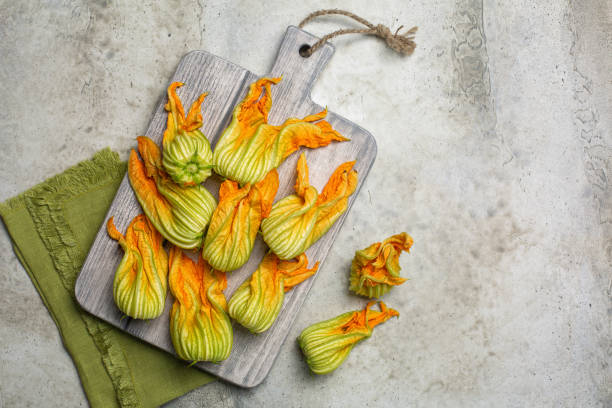
istockphoto https://www.youtube.com/watch?v=r2NsnolEVvc




















